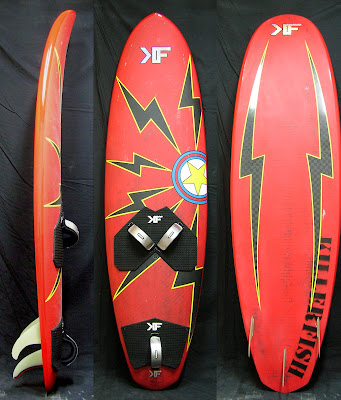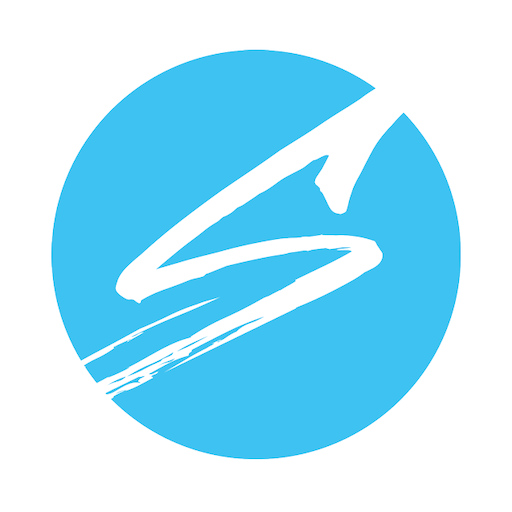En test från hösten 2012 av Black Box proto utförd av Boards. En intressant diskussion kring konceptet.
/Magnus
http://www.star-board.com/wp/?p=13266
Black Box Prototype, BOARDS (UK), Fall 2012
Posted on April 28, 2013 by Antoine
This winter, Adrian Jones and his clones from BOARDS Magazine tested one of the latest Black Box prototypes, right before it was put to production. Although some characteristics have been tweaked and improved since, the concept and key features of this revolutionary design haven’t: it is a “truly exceptional” performing light wind board!
• Length: 212.5 cm
• Width: 61. 5 cm
• Tail Width (at 30): 42.5 cm
• Strap Spread: 57.5 cm
• Mast Track from Tail: 117 cm
• Strap to Tail: 12.5 cm
• Fin Size: 2 x 15.5 cm + 1 x 12 cm
The Black Box is a prototype board that will be released into production by Starboard next year. It has been developed by top World Tour rider Dany Bruch who was inspired after trying a surf board with a similar concept:
“One day I used a mate’s surfboard, it was a 5’8″ JS called the Black Box. I have never tried a surfboard that small. I wanted to try it as it had a weird shape… short but super wide in the center and tail and with not much volume. It really caught my attention. I had seen my mate on it in mushy waves and he was flying on it, but he’s a really good surfer and I did not think it would do the same for me – but it did! I could race full speed down the line, get some nice turns in and have a lot of fun in waves that normally would not allow me to do anything similar. That session made me think a lot. I thought about how many days we have light winds and small waves around the world… and if this concept worked so well in surfing why would it not also work for windsurfing? I needed to give it a shot!”
And that’s exactly what Dany did. On his way home from testing the new Starboard Kodes in Australia in December 2011, he dropped in to Starboard HQ, in Thailand and got the go-ahead from Svein (Rasmussen) and Tiesda (You) to start development.
“I knew more or less what I wanted. I started to draw the outline, where I took some references off an old Starboard Fish from 2001, chose the tail I wanted, nose and rails, rocker line, bottom shape and inserts. I had the feeling I could get the idea to work, but I was not sure about what fin set-up to use: twin, thruster, single fin or quad. The quad actually was calling me the most, as I thought that with such a wide tail, to have two fins on the side, near the rails, would allow it to turn easier, and then to have two more fins to hold the drive would be perfect… but it never worked. Actually I have to say, that after three month’s of testing different set-ups on the board, re-shaping the tail, etc, I was about to abandon the project. I was using it in so many different conditions, strong winds, light winds, no wind, fins here and there. Each session I was going down to the beach with a bag full of fins to test, my mates on the beach would laugh about my “door”, but I carried on until I found the magic set-up. I used the widest twin fin option possible, which allowed me to make a turn with no effort and avoided losing grip all the time. I then put in a trailer fin, to keep track and drive. I just could not believe the result, it was amazing!“
Dany was so excited about the results that he invited our Clone test team to try out his Black Box prototype.
At first glance, it looks quite different to a regular board, with a lot of width in the tail, but also carrying right through to its rather abruptly, rounded-off nose. The first thing you notice when you step on is that, despite the width, it is actually quite low in volume and in fact feels smaller underfoot than we were anticipating. The width gives good stability when wobbling out and helps the board quickly onto the plane. Once planing, the Black Box accelerates well and has reasonable speed, but gives a less involved ride than a conventional wave board because of the width. Actually, it is quite reminiscent in feel to a freestyle board with its flat, low and wide outline. The board could be jumped quite OK with its shorter length making it maneuverable in the air, although the extra width made it less comfortable.
However, straight-line and jumping performance is not what this board is about. The Black Box is designed to ride small, mushy waves. And in this role we have to say that it was exceptional. Truly exceptional. It holds speed on a wave in a way that we have never experienced before. It flatters the rider and allows them to link turns together in conditions that would normally only allow for one turn. Despite its width, it feels very loose, surfy and maneuverable underfoot, floating up well over whitewater and you really notice the difference in speed compared to a conventional board as you drop back down the wave ready to start your next turn. Even without power in the sail, it becomes possible to link straight into the next turn and this point was illustrated perfectly by watching Dany competing on the first (rather fluky) day in Klitmoller this year, where he was linking more turns, with more speed than pretty much anyone else on the water that day.
If we were to look for any kind of fault, it would be that our prototype was lacking a little grip off the top. However, Dany assures us that this has been addressed on the latest prototype, which was actually in Thailand getting turned into the production board whilst we were testing this version. In windier conditions, when the sail is holding a lot of power, and particularly with lighter riders, the board starts to become less manageable due to its tail width. Nevertheless, Dany tells us that he has been using the board down to 4.5m weather (he is 90kgs) and proved this by choosing to use it in the windy double elimination in Klitmoller where he placed seventh overall.
So what we have here is a board that has taken a massive leap of faith on the evolutionary scale of width and length. Not only does it work, but it truly excels for riding in smaller, mushy waves and lighter winds. And let’s be honest that’s what most of us sail in most of the time.
We have a strong feeling that Dany has created something very significant here, something that will open a new door in windsurfing board design. The Black Box is not a board for all conditions (in its current form), but in the conditions that it’s designed for, there is no doubt in our mind that it is on a pedestal, offering wave riding advantages to all levels of rider. It certainly makes wave riding, in less than ideal conditions, a lot more fun and with future refinement of the concept, may even have the potential to offer an exciting new avenue in all-round wave board design.






